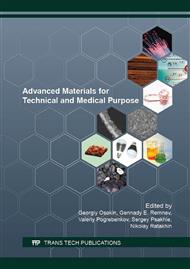p.20
p.26
p.31
p.37
p.43
p.49
p.55
p.60
p.65
Electrical Treeing in Solid Fossil Fuels
Abstract:
The electrical treeing phenomenon is being actively studied in relation to polymer dielectrics like epoxy resin and polyethylene. In these materials treeing is the cause of degradation and failure of insulation parts. However, treeing is also found in other materials, where it can be used purposefully. Peculiar kind of treeing can be observed in solid fossil fuels. There are significant differences in the mechanism of treeing in solid fuels and organic dielectrics. These differences are specified by physical structure and chemical content of solid fuels, and also by thermal decomposition of organic matter under discharge influence. Treeing in solid fossil fuels leaves conductive tracks in rock. This allows using it in processing technologies, including in situ conversion.
Info:
Periodical:
Pages:
43-48
Citation:
Online since:
September 2016
Authors:
Keywords:
Price:
Сopyright:
© 2016 Trans Tech Publications Ltd. All Rights Reserved
Share:
Citation:


